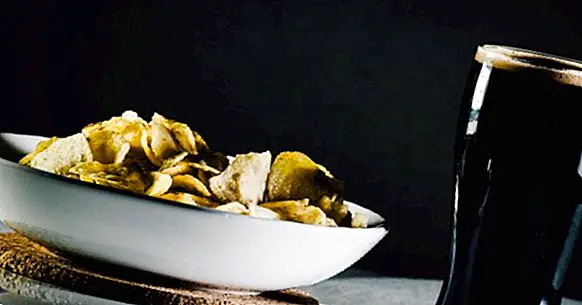Can marketing really change our preferences? The case of Pepsi vs. Coca Cola
A few years ago, the company PepsiCo , manufacturer and bottling of the beverage Pepsi , launched a very special advertising campaign on the market. It was known throughout the world as "the Pepsi Challenge" and basically consisted of a social experiment that sought to prove that the public, in general, preferred the taste of Pepsi at Coca Cola , which was, and continues to be today, the main competing brand.
In public places in many cities around the world tasting tables were placed where people could taste both soft drinks, under a procedure called "blind tasting". That is, the participants drank one of the drinks, then tasted a sip of the other, and then they had to determine their preference, manifest which of the two they liked the most.
As the company expected, most people said they liked Pepsi more . Of course, the company took care that these results were disseminated and would get to know each other until the very end of the planet.
Effective marketing: the reaction of Coca-Cola
The response from Coca-Cola was not long in coming. First they put the scream in the sky, and then they prepared to replicate the advertising campaign, but this time, obviously, starting from the premise exactly the opposite.
And indeed, what they observed, was that most people, when choosing, were inclined towards Coca-Cola.
The contradiction in the contrast of the data quickly came to light. Either the people in Pepsi's research and marketing department had misrepresented the data and were lying, or else Coca-Cola people did it. Both companies could not be right .
An independent investigation about Pepsi and Coca-Cola
It seems that the mystery reached the ears of a group of fanatic scientists of the drinks, who, moved by curiosity, prepared to do their own research. They were determined to find out which of the two brands the public preference was .
But they introduced a variant in the process. This time, while the participants drank the soda, their brains were going to be monitored under functional magnetic resonance technology.
What is functional magnetic resonance?
Functional magnetic resonance (abbreviated fMRI and English) is a tool based on the use of a device that allows scientists to observe, live and direct, what group of neurons are activated in a person's brain while being asked to perform some activity ; in this particular case, savor the dark and bubbly drink.
For this, the person must be introduced, horizontally, inside a resonator. Your head is fastened with a harness, it is necessary that it does not move so that brain activity can be monitored
This is possible because this type of technology allows measuring the metabolism of nerve cells that shape the different structures that make up the brain. Wherever a greater blood supply and increased oxygen consumption are detected, it follows that neurons are on and doing their job.
How did the soda get to the participant's mouth in such uncomfortable experimental conditions? Simple: through a little hose that made it possible for the drink to travel from far away.
The power of the Coca-Cola brand over our brain
And here comes the truly amazing.
The researchers discovered that, both when people drank Pepsi and when they tried Coca-Cola, in their brains was put into operation what is commonly called "the pleasure circuit" . This refers to certain brain areas, which are responsible for the enjoyment we experience when we expose ourselves to circumstances that are to our liking. It can be a soda drink, as in this case, but also in very varied experiences, such as having sex, watching our favorite television series, reading a book that we are passionate about, eating churros stuffed with dulce de leche, or smoking marijuana.
But the curious thing is that, when the people participating in the experiment were informed of what was the brand of the soda they were drinking, something else happened, another region of the brain was activated.
This time, it was a structure very different from the previous one, called dorsolateral prefrontal cortex, and that is located, approximately, behind each one of the temples of the human skull.
What is the function of the dorsolateral prefrontal cortex?
Well, it is considered that this part of the brain is the anatomical basis of several mental processes of a higher order, typical of humans, including the formation of concepts and the organization and regulation of intellectual functions.
Simplifying the thing a bit, when the participants drank soda while ignoring the brand, the circuit of the pleasure of the brain was lit , triggered by the pleasant sensation coming from the taste buds.
But when they were informed of the brand of the drink, the dorsolateral prefrontal cortex was also lit. In other words, In addition, the area of the brain where the knowledge and valuation of the brand is hosted was activated .
And here is a detail that is not minor. The dorsolateral neurons were much more laborious when people drank Coca-Cola compared to when they drank Pepsi. The monitors of the resonator showed a much more intense activity when the participants were aware that the brand they were savoring was the number one in the world.
And it turns out that, precisely, the only difference in procedure between the two original advertising campaigns was that the people of Coca-Cola told those who came to drink to their tasting stations which glass contained one and another soda. Moreover, the containers were marked with their respective logos.
On the other hand, in the "Pepsi Challenge", the participants made value judgments based solely on the taste of the beverages they were tasting, since they had no knowledge of which one was which. In this case, the choice is based strictly on the degree of sensory satisfaction experienced by the person.
When marketing exceeds taste
What is this all about? First, for most people, everything seems to indicate that Pepsi is more tasty than Coca-Cola .
Second, when people know what they are drinking, they prefer Coca-Cola, and this choice is primarily driven by the power of the brand.
It seems incredible, but a simple trademark can have enough weight to impose on the sensory enjoyment net that we experience when we consume a product. A simple brand can beat the enjoyment based on the senses, twisting our decisions and leading us to opt for an alternative that causes us less pleasure than another.
When the participants of the experiment had the expectation that they were going to drink Coca-Cola, that soda seemed more tasty than the competition. On the other hand, when they did not have the expectation of drinking Coca-Cola, the land was paved for real sensory pleasure, clean and without conditioning, based solely on taste, and that is where Pepsi clearly won. Surprising.
All trademarks have a value for us . And that value occupies a place in our brain. The marketing companies know this for a long time. Their job is, precisely, to create all the added value possible through the brand, which leads the product to a privileged position in the mind of the consumer. The instrument used for this purpose is the incessant bombardment of advertising by all possible means of communication. Something that Coca-Cola knows and does very well.



















